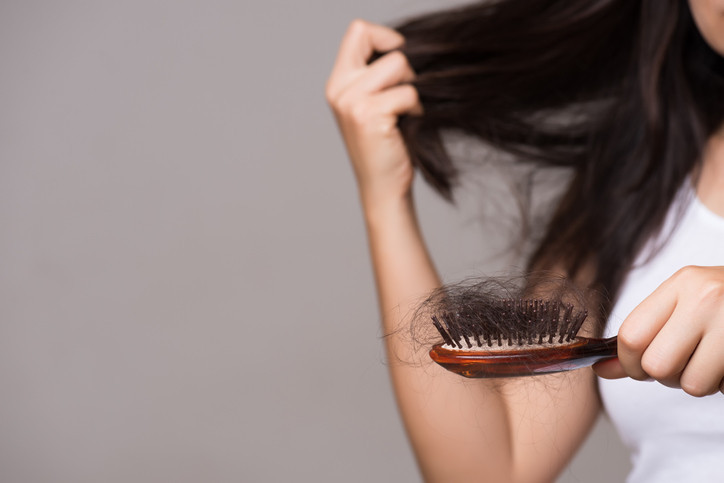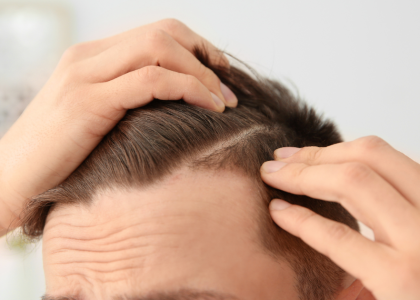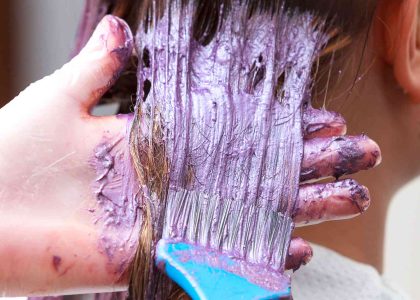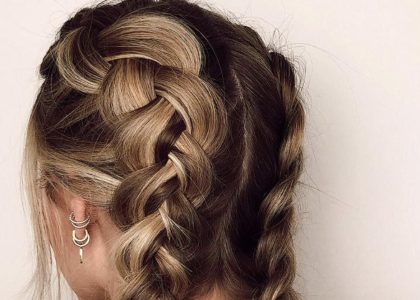What Causes Hair Loss: Understanding the Reasons Behind Thinning Hair
Hair loss is a common concern for both men and women. It can be a gradual process or a sudden change, and it can affect your scalp, eyebrows, or other areas of your body. While what causes of hair loss is a normal part of aging, excessive shedding. Understanding the reasons behind hair loss empowers you to seek solutions and potentially slow down the process.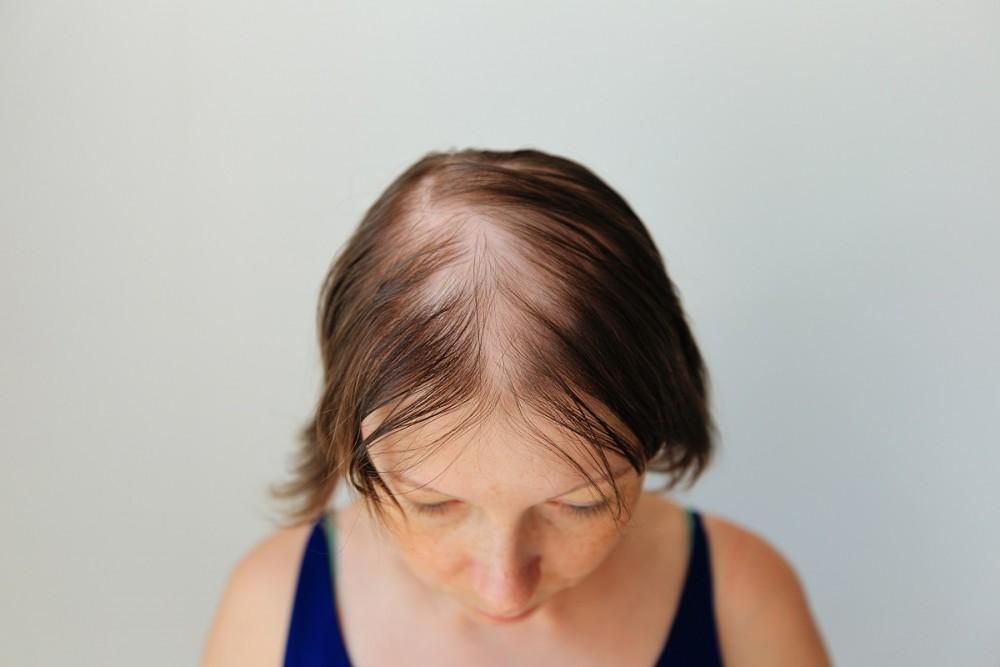
Types of Hair Loss: Shedding vs. Balding
Understanding the difference between shedding and balding is crucial for identifying potential hair loss concerns. While they might seem similar at first glance, the underlying processes and implications differ significantly.
Shedding:
- Normal process: Losing 50-100 hairs per day is considered normal shedding. This is part of the natural hair growth cycle, where hair follicles go through phases of growth, rest, and shedding.
- Temporary: Shed hair is typically replaced by new hair growth.
- Causes: Shedding can be influenced by various factors, including:
- Stress: Physical or emotional stress can disrupt the hair growth cycle and trigger temporary shedding.
- Hormonal fluctuations: Changes in hormone levels, such as during pregnancy, childbirth, menopause, or certain medical conditions, can lead to temporary shedding.
- Seasonal changes: Some people experience increased shedding during certain times of the year, like fall or spring.
- Changes in hair care routine: Switching shampoos, conditioners, or styling products can sometimes cause temporary shedding.
Balding:
- Permanent hair loss: Balding occurs when hair follicles are damaged or miniaturized, leading to a permanent reduction in hair density.
- Progressive: Unlike shedding, balding is a progressive condition where hair loss worsens over time.
- Causes: Several factors can contribute to balding, including:
- Genetics: Hereditary hair loss, also known as androgenetic alopecia, is the most common cause of balding. Genes determine your susceptibility to this type of hair loss, and it’s often triggered by hormonal changes.
- Medical conditions: Certain medical conditions and their treatments can cause permanent hair loss, like autoimmune diseases, scalp infections, or chemotherapy drugs.
- Scarring alopecia: This type of hair loss occurs when the scalp is damaged due to injury, burns, or certain medical conditions, leading to permanent scarring and hair loss in the affected area.
- Traction alopecia: This type of hair loss is caused by repeated pulling or tension on the hair follicles, often due to tight hairstyles like braids, cornrows, or ponytails.
Identifying the Difference:
While both shedding and balding involve hair loss, several key points distinguish them:
- Rate of loss: Shedding typically involves losing a small number of hairs daily, while balding manifests as a gradual or noticeable thinning of hair over time.
- Pattern of loss: Shedding usually affects the entire scalp, while balding often follows specific patterns, like receding hairline in men or widening part line in women.
- Regrowth: Shed hair is typically replaced by new growth, whereas balding involves permanent hair loss with minimal to no regrowth without intervention.
Common Causes of Hair Loss: Exploring the Triggers
1. Genetics: Hereditary hair loss, also known as androgenetic alopecia, is the most common cause of hair loss. It affects both men (male pattern baldness) and women (female pattern hair loss). Genes determine your predisposition to this type of hair loss, and it’s often triggered by hormonal changes.
2. Hormonal Changes: Fluctuations in hormone levels can disrupt the hair growth cycle and lead to hair loss. This can occur during pregnancy, childbirth, menopause, and certain medical conditions such as thyroid disorders or polycystic ovary syndrome (PCOS).
3. Medical Conditions: Certain medical conditions and their treatments can cause hair loss. These include autoimmune diseases like lupus, alopecia areata (an autoimmune attack on hair follicles), scalp infections, and medications like chemotherapy drugs.
4. Stress: Severe physical or emotional stress can trigger temporary hair loss. This type of hair loss usually resolves once the stressor is eliminated.
5. Nutritional Deficiencies: Deficiencies in iron, vitamin D, biotin, or other essential nutrients can contribute to hair loss. Maintaining a balanced diet is crucial for healthy hair growth.
6. Hairstyles and Hair Care Practices: Tight hairstyles that pull on the hair follicles (like cornrows or tight ponytails) can lead to a type of hair loss called traction alopecia. Harsh chemical treatments, excessive heat styling, and improper hair care practices can also damage hair and contribute to breakage and thinning.
Recognizing the Signs of Hair Loss: Early Detection is Key
Early detection of hair loss allows you to address the underlying cause and potentially slow down the process. Here are some signs to watch out for:
- Excessive hair shedding: Losing more than 100 hairs per day
- Visible patches of baldness on the scalp
- Receding hairline in men
- Widening part line in women
- Decreased hair density overall
- Brittle or easily broken hair
If you’re experiencing any of these signs, it’s important to consult a doctor or dermatologist to determine the cause of hair loss and discuss treatment options.
Treatment Options for Hair Loss: Exploring Solutions
There’s no one-size-fits-all solution for hair loss. The best treatment option depends on the underlying cause and the severity of hair loss. Here are some common treatment approaches:
- Medications: Minoxidil (Rogaine) and finasteride (Propecia) are FDA-approved medications for hair loss. Minoxidil is a topical solution that stimulates hair growth, while finasteride is a pill that reduces the production of DHT, a hormone that contributes to hair loss in men.
- Hair Transplant Surgery: This surgical procedure involves transplanting hair follicles from a donor area of the scalp to a bald or thinning area.
- Low Level Laser Therapy (LLLT): This non-invasive treatment uses low-level laser beams to stimulate hair growth.
- Platelet-Rich Plasma (PRP) Therapy: PRP injections utilize a concentration of your own platelets to stimulate hair growth.
- Dietary Changes: Ensuring you have adequate levels of essential nutrients like iron, vitamin D, and biotin can support healthy hair growth.
- Stress Management: Finding healthy ways to manage stress may help reduce temporary hair loss triggered by stress.
- Gentle Hair Care Practices: Using gentle shampoos and conditioners, avoiding harsh chemical treatments, and minimizing heat styling can help prevent hair damage and breakage.
Remember: It’s crucial to consult with a healthcare professional before starting any hair loss treatment to determine the best approach for your individual situation.
Living with Hair Loss: Maintaining Confidence and Well-Being
Hair loss can be a challenging experience, impacting your self-esteem and confidence. However, it’s important to remember that you’re not alone. Many people experience hair loss, and there are ways to manage it and maintain a positive self-image. Here are some tips:
- Focus on what you can control: While you may not be able to completely stop hair loss, you can focus on healthy habits and treatments that might slow it down. Taking proactive steps can empower you and provide a sense of control.
- Embrace your natural beauty: Explore different hairstyles that flatter your face shape and hair type. Consider haircuts that add volume and texture or experiment with wigs, scarves, or hats to express your personal style.
- Connect with others: Talking to friends, family, or support groups can help you feel less alone and provide valuable advice and resources.
- Seek professional help: If hair loss is causing you significant distress, consider seeking professional help from a therapist or counselor. They can provide tools and strategies to cope with the emotional impact of hair loss.
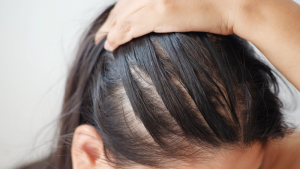
Remember, hair loss doesn’t define you. You are worthy and valuable regardless of your hair. Focus on your overall well-being, embrace your unique beauty, and seek support if needed. By taking care of yourself and prioritizing your mental health, you can navigate the journey of hair loss with confidence and strength.

